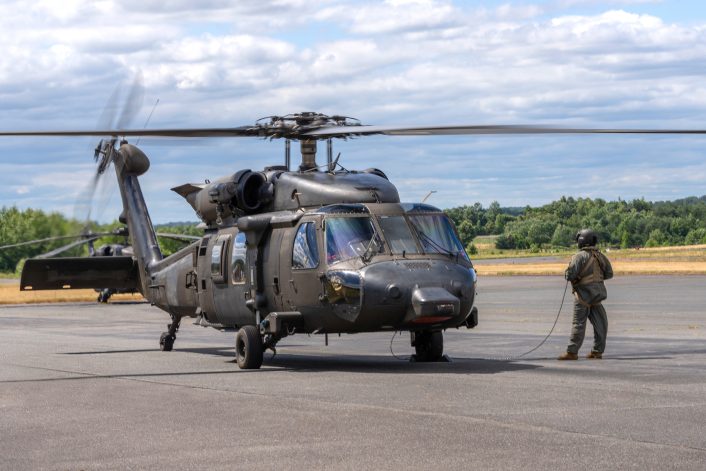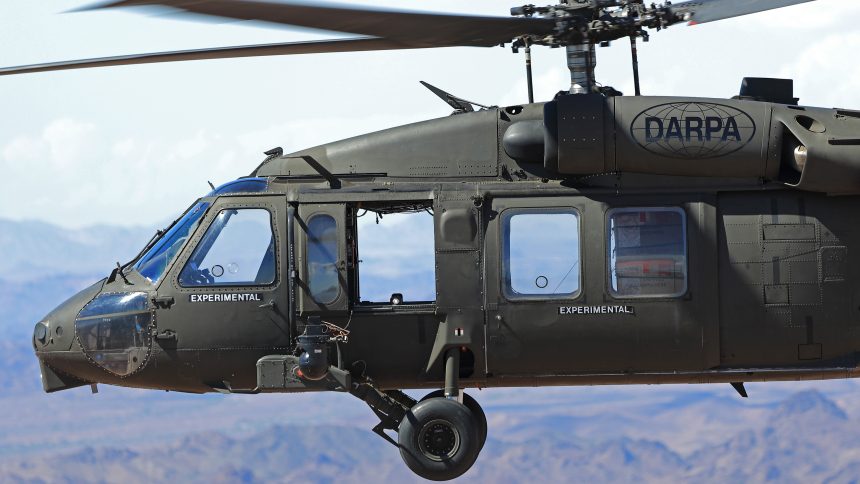Sikorsky to add add cutting-edge MATRIX technology to the UH-60M Black Hawk, pushing the limits of Autonomous Military Aviation.
Sikorsky, has secured a $6 million contract from DARPA (Defense Advanced Research Projects Agency) to outfit the U.S. Army’s experimental fly-by-wire UH-60M Black Hawk helicopter with its advanced ALIAS/MATRIX flight autonomy system, the company, a subsidiary of Lockheed Martin, announced on Oct. 14, 2024. This initiative, named MX, will allow the U.S. Army’s Combat Capabilities Development Command (DEVCOM) to rigorously test and assess a variety of autonomous capabilities, ranging from single-pilot operations to fully autonomous, uninhabited flights.

Rich Benton, Sikorsky’s vice president and general manager, highlighted the transformative potential of these advancements. “Autonomy-enabled aircraft will significantly lessen pilot workload, enhance flight safety, and provide commanders with unprecedented mission flexibility in complex, contested environments,” Benton remarked. He added that modernizing the Black Hawk helicopters today will ensure they remain relevant into the 2070s, benefiting both current and future Army Aviation platforms.
The MATRIX autonomy system forms the technological foundation for DARPA’s ALIAS (Aircrew Labor In-cockpit Automation System) program that Sikorsky has developed since 2020.
The Aircrew Labor In-cockpit Automation System (ALIAS) program aims to address challenges in military aviation by reducing pilot workload and enhancing mission performance through advanced automation. Traditional aircraft systems demand high levels of operator involvement, but ALIAS seeks to alleviate this burden by introducing a flexible, drop-in automation system that can be integrated into existing aircraft. This system provides autonomous flight capabilities, allowing pilots to shift focus from technical mechanics to strategic mission management.
The ALIAS program combines Sikorsky’s MATRIX technology with enhanced flight controls, enabling fully autonomous operations from takeoff to landing, even managing emergency situations. Pilots can monitor and supervise flights using a touch or voice-controlled tablet interface. The system has been tested successfully on various platforms, including the UH-60 Black Hawk, and has demonstrated the ability to navigate complex environments and execute missions with minimal human intervention. Through continued development, ALIAS is set to revolutionize both military and commercial aviation by offering scalable, adaptable automation.
On Feb. 5, 2022, a U.S. Army UH-60A helicopter retrofitted in an Optionally Piloted Vehicle (OPV) configuration, performed a 30-minute flight without anyone onboard over the U.S. Army installation at Fort Campbell (Kentucky), followed by a second flight on Feb. 7.
Here’s what we wrote about that first flight in a previous article:
After preparing the Black Hawk, the pilot flipped the optionally piloted cockpit switch from two pilot operations to zero and left the aircraft. The helicopter then completed autonomously a pre-flight check list and started its engines in preparation for the flight. The UH-60 then navigated at typical speed and altitude through a simulated cityscape, avoiding imagined buildings while performing route re-planning in real time as on-board sensor simulation provided real-time obstacle data.
Benjamin Williamson, lead test pilot for the Fort Campbell event, said, “This capability will allow pilots to confidently switch back and forth between autonomy and piloted modes at any point of their mission with the literal flip of a switch. This will support autonomous flight during a wide range of missions such as flight in degraded visual environments (DVE) and confined areas. Most critically, ALIAS will be capable of automatically detecting and preventing dangerous situations that lead to accidents, thereby saving lives.”
Following the simulated cityscape navigation, the helicopter autonomously executed a series of pedal turns, maneuvers and straightaways before returning back for landing and shutdown. The Army is currently exploring potential use cases for such technologies, including those outlined in the U.S. Army’s Future Vertical Lift (FVL) program. “Lockheed Martin Sikorsky’s advancements in flight automation and autonomy will be game-changers for Army aviators and ground commanders, particularly as the Army looks to modernize its enduring helicopter fleet with Future Vertical Lift”, said Jay Macklin, Sikorsky business development lead for Army, Future Vertical Lift, and Innovations programs.
When the MATRIX system is fully integrated, this aircraft will closely resemble Sikorsky’s UH-60A Optionally Piloted Black Hawk, which has already logged hundreds of hours testing autonomous capabilities since the historic first flight.
Scheduled for installation in 2025, the MATRIX system will enable DEVCOM to evaluate a scalable autonomy platform. This assessment will include the testing of various sensor systems for threat detection, obstacle avoidance, and terrain navigation, laying the groundwork for developing standards and specifications for integration with both MATRIX and fly-by-wire flight control systems.
In a key demonstration in July 2024, Sikorsky and DARPA showcased the capabilities of the Optionally Piloted Black Hawk to military personnel and senior officials at the Department of Defense. Using just a tablet interface, operators could easily control the helicopter either from the cabin or remotely from the ground, highlighting the flexibility of autonomous operation.
These demonstrations build on a previous milestone at Project Convergence 2022, where Sikorsky and DARPA showcased the Black Hawk’s ability to autonomously conduct cargo resupply missions without any crew onboard.









